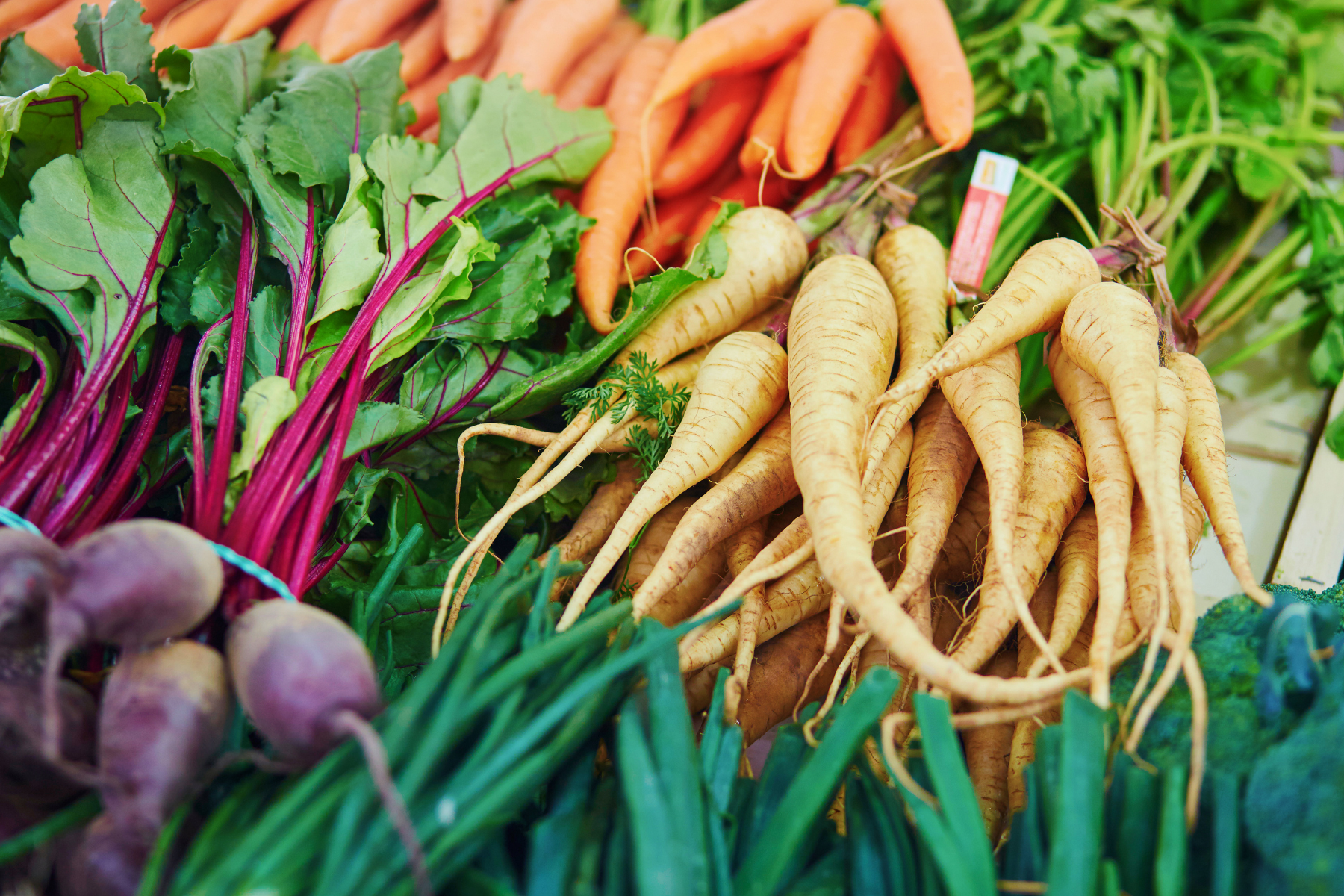If you haven’t tried eating seasonally yet, February is a great month to start with its great variety of fresh produce like broccoli, citrus, and sweet potatoes. If you’re looking to discover a new way of planning your meals for the month, you may find it easier to start by adding just a few of these seasonal foods to your grocery list. This February produce guide provides you with everything you might want to know about prioritizing seasonal foods by explaining why and how to start today. Keep reading to learn which foods are in season now and how you can start incorporating them into your meals this month.
Note: Seasonal foods may vary by region. For example, strawberries may be an in-season fruit in Arizona during February but are typically not in season in New York until June. If you’re ever wondering about what foods are in season at your location, you can ask around at your local farmer’s market or search online resources.
Why Eat Seasonally?
Seasonal eating involves focusing your meals around produce that is ready for harvest and at its peak ripeness. Many benefits come with buying produce that is in season. Whether you are looking to save on grocery spending or simply switch up your meals this month, eating seasonally may be a great option for you.
- It’s gentler on our planet. Modern technology and new agricultural processes have allowed grocery stores to stock all kinds of food year-round. However, produce that is obtained out of season has a higher environmental cost for the land where it was produced. For example, the additional water needed to support these crops may be more than the area can supply (1).
- You can support local farmers. Purchasing the seasonal produce that is available at your local farmer’s market helps keep the money you spend on your food within your community (2).
- Eating seasonally helps diversify your diet. It is beneficial to include a variety of fruits and vegetables in your diet to ensure that you are getting all the vitamins and minerals you need to function at your best (2). Choosing foods that are in season can help keep you from eating the same few options every day.
- There is improved taste and nutritional value. Since the produce doesn’t have to travel as far when it is in season, fewer nutrients are lost during transit (1). Seasonal produce is also perfectly ripe which helps improve freshness and flavor.
- The price is at its cheapest. This is due to a lower expense involved with transporting the produce and the overall greater supply (1).
February Produce In-Season Now
Broccoli
Broccoli is a great source of vitamins C and A which are important for a healthy immune system and skin barrier (3). Like other cruciferous vegetables, broccoli is full of antioxidants, which have been shown to aid in reducing cancer risk. Add broccoli to your meals this February by including it in soups or pasta dishes or simply serve it on its own as a side.
Brussels Sprouts
Like broccoli, brussels sprouts are part of the nutrient-rich cruciferous family and serve as a great source of vitamins C, K, and folate (3). Brussels sprouts are bitter when consumed raw but develop a sweet, nutty flavor when cooked, so experiment with different cooking techniques to discover what tastes best to you.
Cabbage
With a vitamin C content that provides almost half of the recommended amount per half cup, cabbage provides an excellent way to help boost your immune system during the flu season (3). This versatile food tastes great steamed, baked, sauteed, or even raw. Try adding cabbage to salads, soups, stir frys, wraps, or sandwiches for some extra crunch and flavor.
Carrots
This vibrant orange vegetable is rich in vitamin A and potassium (3). Carrots can provide a fun opportunity for experimenting with different spices. Try amplifying the flavor by seasoning with allspice, basil, cloves, cinnamon, curry, dill, ginger, marjoram, or thyme. Since they can be roasted, steamed, eaten raw, or thrown into soups and salads, carrots can easily be added to many dishes.
Leafy Greens
During February, leafy green vegetables such as spinach, lettuce, and arugula are in season. These powerful greens are packed with nutrients like vitamins A, C, K, fiber, folate, magnesium, calcium, iron, and potassium (3). Don’t limit yourself to just salads for getting in your greens. For example, you can try adding spinach to a frittata/omelet or arugula to a homemade pizza. Leafy greens are also good for adding texture and bulk to burrito bowl-style meals.
Beets
Did you know that you can eat both the green part of beets and the root? Beet greens provide you with vitamins K and A while the root is a great source of folate (3). If beets are a new food for you, try sauteeing the greens and roasting the root with other root vegetables.
Sweet Potatoes
Like carrots, sweet potatoes contain high amounts of vitamin A, which is great for eye and skin health (3). Roast, bake, or add to soups/chilis as a fiber-rich carbohydrate source for your savory meals. Craving something sweeter? Try topping your sweet potato with Greek yogurt and berries.
Citrus
If you appreciate the sweet or sour tang of citrus, then you’re in luck. Citrus fruits like lemons, grapefruit, clementines, and oranges are all in season during February. These vibrant fruits serve as rich sources of vitamin C and fiber (3). Enjoy citrus as an easy on-the-go snack or use it to add flavor and zest to salads and marinades.
References
(1) Macdiarmid JI. Seasonality and dietary requirements: will eating seasonal food contribute to health and environmental sustainability?. Proc Nutr Soc. 2014;73(3):368-375. doi:10.1017/S0029665113003753
(2) Vargas AM, de Moura AP, Deliza R, Cunha LM. The Role of Local Seasonal Foods in Enhancing Sustainable Food Consumption: A Systematic Literature Review. Foods. 2021;10(9):2206. Published 2021 Sep 17. doi:10.3390/foods10092206
(3) Seasonal produce guide. SNAP Education Connection. Accessed January 18, 2024. https://snaped.fns.usda.gov/resources/nutrition-education-materials/seasonal-produce-guide.







